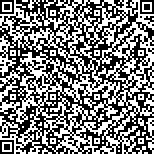吕振,李建军.不同水平脊髓损伤大鼠盆底肌纤维的形态学研究[J].中华物理医学与康复杂志,2021,43(4):295-300
扫码阅读全文

|
| 不同水平脊髓损伤大鼠盆底肌纤维的形态学研究 |
|
| |
| DOI:10.3760/cma.j.issn.0254-1424.2021.04.002 |
| 中文关键词: 脊髓损伤 盆底肌 耻尾肌 肌纤维类型 形态学 |
| 英文关键词: Spinal cord injury Pelvic floor muscles Pubococcygeus muscle Muscle fiber types Morphology |
| 基金项目:中央级公益性科研院所基本科研业务费专项资金(2007-12) |
|
| 摘要点击次数: 5949 |
| 全文下载次数: 9161 |
| 中文摘要: |
| 目的 通过对大鼠不同水平脊髓损伤后盆底肌纤维类型及电镜下形态学观察,为脊髓损伤盆底肌张力异常及功能障碍的临床研究提供参考。 方法 选取雌性成年SD大鼠30只,按随机数字表法分为骶髓上脊髓损伤组(SS组)、骶髓下脊髓损伤组(SC组)和对照组,每组10只,采用脊髓离断法分别制作骶髓上和骶髓下脊髓损伤大鼠模型,造模成功4周后,观察各组大鼠耻尾肌Ⅰ型肌纤维含量、HE染色和电镜下形态学变化。 结果 SS组和SC组大鼠的Ⅰ型肌纤维含量分别为(12612.4±795.0)和(4963.0±1526.3)像素,显著低于对照组[(30625.8±1257.0)像素],组间差异有统计学意义(F=1720,P<0.05),且SC组的Ⅰ型肌纤维含量显著低于SS组(P<0.05)。HE染色中,SS组肌纤维走形迂曲、细胞核增生严重,局部毛细血管扩张;而SC组肌纤维严重断裂,排列紊乱,细胞核呈球状改变伴轻度增生。电镜下,SS组肌小节溶解、断裂严重,但肌小节结构保留,伴轻度线粒体增生;SC组肌小节溶解、断裂更严重,完全丧失肌小节结构,伴大量结缔组织增生,无明显线粒体增生。 结论 骶髓上脊髓损伤后耻尾肌Ⅰ型肌纤维部分减少,以肌萎缩伴肌纤维结构基本保留为特点;而骶髓下脊髓损伤后耻尾肌Ⅰ型肌纤维显著减少,以肌萎缩伴肌纤维结构严重破坏为特点。 |
| 英文摘要: |
| Objective To seek better treatments for abnormal pelvic floor muscle tension and pelvic floor dysfunction after spinal cord injury. Methods The morphology of pelvic floor muscle fibers of rats with spinal cord injury at different levels was observed under the electron microscope. Thirty female adult Sprague-Dawley rats were randomly divided into a suprasacral (SS) cord injury group, a group with spinal cord injury at or below the sacral level (SC) and a normal group (NG), each of 10. The relevant spinal cord injury models were established in the SS and SC groups through spinal cord disconnection. Four weeks later, the pixel area of ATPase-positive fibers was used to quantify the content of type I fibers in the pubococcygeus muscle of each rat through observation under the electron microscope after hematoxylin and eosin staining. Results The average content of type I muscle fibers in both the SS and SC group was significantly lower than in the normal group. The SC group′s average level was significantly lower than that of the SS group. Under the microscope the stained myofibers were tortuous, deformed in appearance and with proliferated nuclei. Capillary dilation could be seen locally in the SS group 4 weeks after the injury. In the SC group at 4 weeks after the injury the pubococcal fibers were seriously “dissolved”, or disordered, with spherical nuclei and mild hyperplasia. Under the electron microscope, the sarcomeres of the SC group were obviously dissolved, atrophied and broken, though the basic structure persisted, with mild mitochondrial proliferation. The sarcomeres of the SC group were extremely dissolved and broken, completely losing basic structure, with abundant connective tissue proliferation but without obvious mitochondrial proliferation. Conclusions After suprasacral cord injury, the content of type I muscle fibers in the pubococcygeus muscle of the pelvic floor decreases somewhat, with the basic structure of the muscle fibers remaining intact. However, after spinal cord injury at or below the sacral level, type I muscle fibers decrease significantly in the pubococcygeus muscle of the pelvic floor, and the basic structure is seriously damaged. |
|
查看全文
查看/发表评论 下载PDF阅读器 |
| 关闭 |
|
|
|